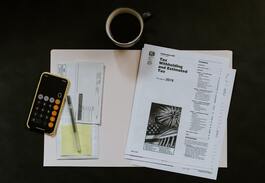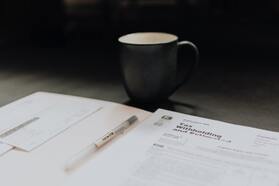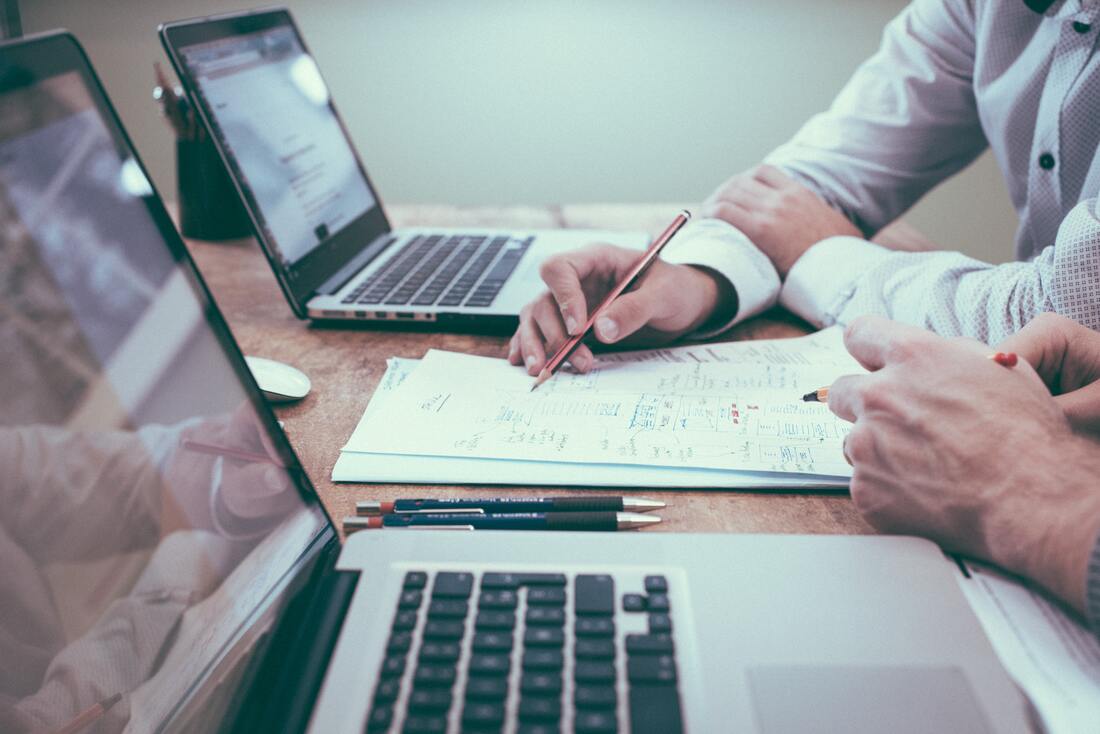| Back in 2015, the then Chancellor made a very bold statement, that it was his intent to ‘abolish the tax return’. In the background, HMRC have been digitising tax services and have recently completed the rollout of VAT and now are working on income tax for sole traders and landlords. Read on to find out more about the changes and what you might need to start thinking about now, to ensure you and your business is ready. |
|
0 Comments
 Courtesy of HMRC Courtesy of HMRC Over the summer HMRC published some changes to Making Tax Digital which have ben warmly received by the businesses and professionals. The government has said it believes that introducing a new digital tax system is still the right direction to move in. However, it has made amendments to the businesses this impacts and the timescales for change. The amendments to Making Tax Digital now mean:
Recently I’ve been prompted to compose a blog post about the service I provide to the County. To say that I was prompted is an understatement. I was press ganged into writing this by two regular clients who you’ll hear from later. So… let’s do this then…
 Photo by Kelly Sikkema on Unsplash Photo by Kelly Sikkema on Unsplash Inheritance Tax (IHT) is a tax on the estate of someone who’s died – the rate can be as high as 40%. We each have a ‘nil rate band’ of £325,000. Married couples and civil partners are allowed to pass their estate to their spouse tax-free when they die and IHT is payable. Spouses can also pass on their unused tax-free allowance to their surviving spouse. This combined allowance means that when she dies, her estate will only incur Inheritance Tax if it’s worth more than £650,000 (£325,000 + £325,000). From 6 April 2017, everyone has an additional £100,000 (rising to £175,000 by 2020-21) tax-free allowance to use against the value of their home. Also known as the residence nil rate band. Broadly speaking, you can only get this additional allowance if they leave your home to your children or grandchildren. This allowance can also transfer to the surviving spouse if it isn’t used up already. This means by 2020-21, a married couple could leave a combined estate of up to £1 million without incurring IHT. The small print is far more complex than this article suggests and more detail can be found on THIS LINK With new year’s resolutions not that far behind us, it might be well worth reviewing your will to ensure it can take advantage of this new relief. As always, for help and advice with your business, tax matters or any other questions, please feel free to make contact with me and see what I can do for you.  Photo by Kelly Sikkema on Unsplash Photo by Kelly Sikkema on Unsplash The flat rate was introduced to simplify accounting for smaller businesses – you simply pay a relevant proportion of your gross takings to HMRC each quarter and this varies by industry category. The highest rate is currently 14.5%. As reported late last year, life is about to become a whole lot more complicated for businesses that supply largely services of labour where goods (and we are still awaiting the precise definition) comprise:
So for example as a management consultant you invoice £100,000 per annum plus VAT of £20,000. The flat rate currently applies is 14% so you pay 14% of £120,000 to HMRC i.e. £16,800. You retain £3,200. From 1 April 2017, if you do not meet the ‘goods’ test you would pay £19,800 retaining only £200 – 16.5% is a lot less kind than it first appears. We do know that goods cannot comprise capital items, food and drink and motoring expenses. There is of course the option to revert to normal standard accounting from 1 April 2017 but that does add complication to the preparation of VAT returns. For help or advice concerning VAT and your business or any other accountancy questions you may have, why not contact me via the website? Why not watch my short video below covering the flat rate of VAT? A van which is made available to an employee (or a Company Director) is considered by HMRC to be available for private use unless the terms on which the van is provided prohibit its private use and no private use is actually made of it (so it’s a good idea to check employment contracts).
This means that the mere prohibition of private use is not in itself sufficient to prevent a tax charge; it is also necessary to show that a van is not used for private motoring. The charge is nil if both the following requirements are satisfied throughout the year (or part of the year depending on when the van is available to the employee):
If one of the requirements is not met the charge for 2015/16 is £3,150 and for 2016/17 the benefit increases to £3,170 per van. There is also a fuel benefit. The word ‘insignificant’ is not defined, so takes its normal meaning of ‘too small or unimportant to be worth consideration’. Private use is to be considered insignificant if for example an employee who uses a van:
Private use by an employee that is not insignificant (and would trigger the benefit charge) is for example:
It’s also worth making sure that when an employee has a van its truly a van within the definition as if the vehicle is considered to be a car the likelihood is that it would trigger a much higher scale charge. For more information on the rules surrounding this or anything else, please feel free to contact me
Lets take a look at the changes:
Obviously this may still leave some of you with questions or you might just need some additional information. Here at Nigel Gosrki Consulting, I'm used to taking these calls and advising my clients on the best course of action for them. Please feel at ease to contact me for an informal chat.
 Photo by Micheile Henderson on Unsplash Photo by Micheile Henderson on Unsplash For small investors the start of the new tax year heralds some good news with some new tax free allowances in addition to any ISA allowances or ISA that income that you may have. Interest: Banks and Building Societies will no longer deduct tax on your interest from 6 April 2016. Instead, you will receive your interest gross and not pay tax in certain circumstances:
Interestingly there is no ‘abatement’ of the allowance, so basically if your income is £1 over the basic rate limit, then you receive only the £500 allowance. If you receive significant interest which has previously been taxed, then you need to be prepared to pay the tax and complete a Self Assessment. Many clients may want to call me for a chat about this, or if you're busy and feel more comfortable, then contact us through the website here.  Photo by Josh Appel on Unsplash Photo by Josh Appel on Unsplash Most of the business press has majored heavily on the negative impact of the dividend tax on small family owned businesses and to be fair it is going to be a new tax that some people are not used to paying which will come in one lump sum at 31 January 2018. The one positive to draw from the new rules if you’re a family owned company is that there is no more ‘grossing up’ i.e. what is drawn goes directly to your tax return without being adjusted upwards from net to gross income which can cause confusion. This can be helpful for things like tax credits and drawing a bit more without losing child benefit – as a reminder the thresholds are:
For the smaller investor the first £5,000 can be useful as it is tax free now and will not attract higher and additional rate tax unless dividends exceed this amount. Any dividends above the £5,000 will be taxed as normal plus the new 7.5% dividend tax. As usual, if you have any questions about Dividends, or anything else that concerns you, then please call us for a chat, or else contact us via the website here.  Gift aid is a great way to help charities and donations are topped up by the Government with the charity reclaiming the tax. Any donations made by higher rate tax payers are also subject to additional relief via Self Assessment so its important to keep all of those ‘just giving’ receipts and notes of your direct debits. Conversely given the changes to interest and dividend taxation above there will be people who no longer pay tax. It’s therefore important to make sure you don’t tick the gift aid box and you review any direct debits as HMRC are quite entitled to come to you and ask for the tax back that the Charity has claimed. This is particularly relevant to retired people who rely on investment income or those taking career breaks – with interest and dividends paid only periodically sometimes it’s too late when you realise that you’ve not paid any tax! If you'd like to discuss any donations you've made and are interested to find our how this impacts you, then please call for a chat, or contact us via the website here.  Photo by Markus Winkler on Unsplash Photo by Markus Winkler on Unsplash From April 2017, there will be 2 new allowances – one for selling goods or providing services and the other for income from property you own. Both are £1,000 and you can claim both of them. It’s important these are not in any way classed as trades. Here are some practical examples:
Technically until 5 April 2017, this income should be declared. Don’t forget that this also sits over and above the rent a room relief which is currently £7,500, so its fine to have a lodger too within this scheme! More details can be found by following this link. If you have any questions or need to talk to us about your allowances, please give me a call, or contact us through the website In recent months more and more clients have bought a second property as an investment and are considering more properties. As a reminder when you let property it needs to go onto your Self Assessment tax return even if you make a loss, as HMRC are getting pretty skilled at spotting let properties! This also applies to making sure you complete the Capital Gains Section of your tax return when you come to sell it!
There have been subtle changes in the way let properties are taxed over recent years and more are to come:
For more information or to see how this may affect you or your business, contact me for details |
Nigel GorskiSay it as it is and you'll never be misunderstood. Here in the Blog you'll see news posts on many topics of interest to your and your business... Archives
March 2024
Categories
All
|
Telephone: 07980 270610






 RSS Feed
RSS Feed